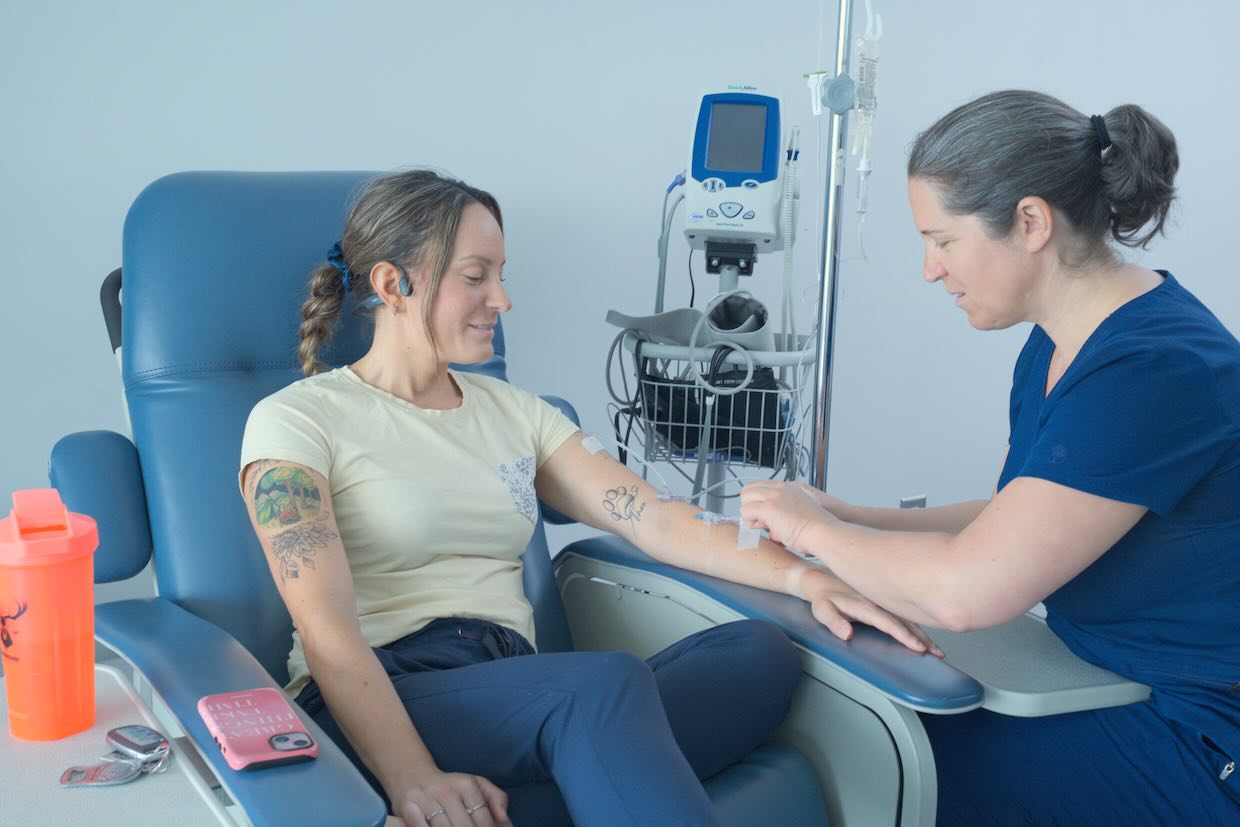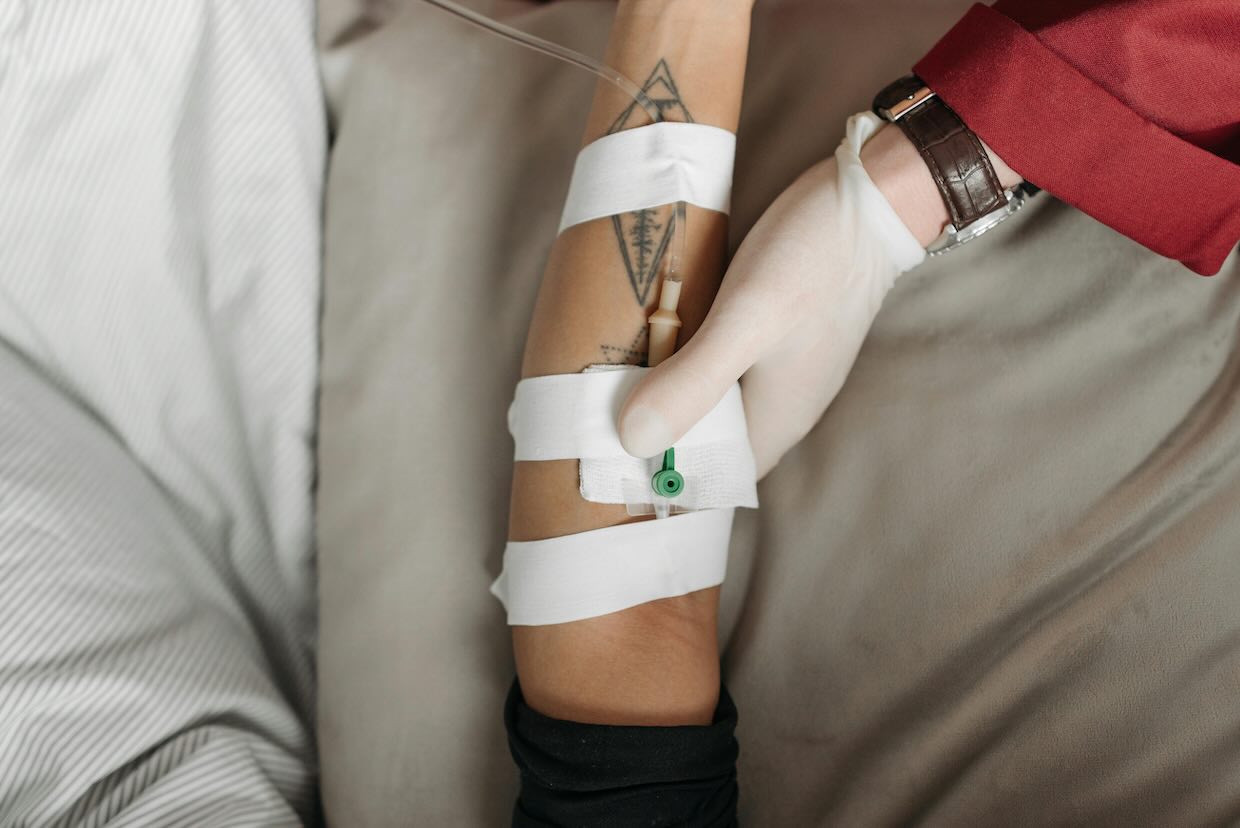Myasthenia gravis (MG) is a family of chronic autoimmune disorders that affect the communication between nerves and muscles. This occurs when the immune system mistakenly targets the neuromuscular junction—the space where nerve signals are transmitted to muscle fibers. The immune reaction can result in only blocking the transmission to damaging the neuromuscular junction itself.
Over time, this is manifested as muscle fatiguability and weakness that may impact the eyes, speech, swallowing, neck and limb strength, and in some cases, breathing. Symptoms vary significantly between individuals, often beginning with a drooping eyelid or a nasal voice at the end of the day, but then can progress significantly.
At Clinique Neuro-Outaouais, we have been using new treatments for myasthenia gravis over the past few years. For patients selected under the right criteria, these treatments frequently offer a higher level of tolerability and, in many cases, superior control of symptoms compared to standard treatments.
Current Standard Treatments for Myasthenia Gravis
The current standard treatments for MG largely rely on broad immunosuppression using medications such as corticosteroids, azathioprine, mycophenolate mofetil, cyclosporine, or methotrexate. These therapies aim to suppress the immune system’s activity overall, rather than specifically targeting the mechanisms driving MG.
These medications, though effective, have significant potential side effects, and often fall short of achieving full symptom control. Several studies have shown that:
- Hospitalization rates remain high, with estimates ranging from 23% to 52% annually, even among treated individuals (Engel-Nitz NM et al., Muscle Nerve, 2018).
- Residual disability and impaired quality of life are common, despite ongoing treatment (Cutter G et al., 2019; Twork S et al., 2010, Andersen LK et al., 2022).
- Mortality risk, though improved over past decades, remains higher than that of the general population—particularly in the first year following diagnosis (Vissing J et al., 2024)
In certain cases, intravenous immunoglobulin (IVIG) offers better tolerability and symptom control. However, access to IVIG is often limited due to its high cost and supply constraints. IVIG is a blood-derived product, and since Canada imports over 85% of its blood products, there is increasing pressure on physicians to reserve its use.
New Treatments for Myasthenia Gravis — A More Targeted Approach
Fortunately, new treatments for myasthenia gravis are now available that take a more specific and mechanistic approach to MG. Rather than suppressing the immune system broadly, these therapies target the disease process more precisely.
1. FcRn Inhibitors — Reducing Pathogenic Antibodies
These medications block the neonatal Fc receptor (FcRn), which normally extends the lifespan of IgG antibodies—including the harmful ones seen in MG. By inhibiting FcRn, these drugs reduce circulating levels of these autoantibodies without general immunosuppression.
- Efgartigimod (Vyvgart) is the first FcRn inhibitor approved for MG.
- Others, such as Rozanolixizumab, Nipocalimab, and Batoclimab, are currently in clinical trials.
The mechanism is similar in effect to plasma exchange but can be administered more conveniently and sustained over long periods of time.
2. Complement Inhibitors — Preserving the Neuromuscular Junction
In MG with acetylcholine receptor (AChR) antibodies the complement system plays a key role in damaging the neuromuscular junction. Complement inhibitors work by interrupting this part of the immune cascade, thereby reducing tissue damage and preserving function.
- Eculizumab (Soliris) was the first to be approved for MG with AChR antibodies.
- Ravulizumab (Ultomiris) offers similar benefits with less frequent dosing.
- Zilucoplan, currently in development, is designed for self-injection and may increase accessibility and convenience.
Our Myasthenia Gravis Experience and Ongoing Research
At Clinique Neuro-Outaouais, we have been using, over the past few years, these newer therapies in our infusion clinic. In appropriately selected patients, they have demonstrated improved tolerability, and, in many cases, better disease control compared to standard immunosuppressive agents. These treatments are, however, not suitable for everyone and are not without their own limitations or risks.
We have recently initiated a clinical trial to evaluate the equivalence or possible superiority of efgartigimod (Vyvgart) compared to IVIG in patients with generalized MG who have been receiving IVIG for over a year.
The trial is part of ongoing efforts to understand how best to use these emerging treatments—not just in theory, but in real-world settings.
Interested in Participating in a Clinical Study on New Myasthenia Gravis Treatments?
If you have MG with (AChR) antibodies and have been receiving IVIG treatments for more than 12 months, you may be eligible to participate in this clinical study. For more information, please contact:
Victorine Sikati Foko, Research Nurse
Clinique Neuro-Outaouais
819-777-2500
Advancing Myasthenia Gravis Care at Clinique Neuro-Outaouais
While standard treatments for MG have provided benefit for many patients, they often fall short of delivering lasting, meaningful symptom control with an acceptable safety profile. The development of newer, more targeted therapies represents a significant step forward.
Clinical trials help us move beyond the status quo and provide patients with access to new and evolving treatments for myasthenia gravis that are grounded in current science.
References
- Andersen, L. K., Jakobsson, A. S., Revsbech, K. L., & Vissing, J. (2022). Causes of symptom dissatisfaction in patients with generalized myasthenia gravis. Journal of Neurology, 269(6), 3086–3093. https://doi.org/10.1007/s00415-021-10902-1 PubMed
- Twork, S., Wiesmeth, S., Klewer, J., Pöhlau, D., & Kugler, J. (2010). Quality of life and life circumstances in German myasthenia gravis patients. Health and Quality of Life Outcomes, 8(129). https://doi.org/10.1186/1477-7525-8-129 PubMed
- Cutter, G., Xin, H., Aban, I., Burns, T. M., Allman, P. H., Farzaneh-Far, R., Duda, P. W., & Kaminski, H. J. (2019). Cross-sectional analysis of the Myasthenia Gravis Patient Registry: Disability and treatment. Muscle & Nerve, 60(6), 707–715. https://doi.org/10.1002/mus.26695 PubMed
- Vissing, J., Atula, S., Savolainen, M., Mehtälä, J., Mehkri, L., Olesen, T. B., Ylisaukko-Oja, T., Lindberg-Schager, I., Berggren, F., & Piehl, F. (2024). Epidemiology of myasthenia gravis in Denmark, Finland and Sweden: a population-based observational study. Journal of Neurology, Neurosurgery & Psychiatry, 95(10), 919–926. https://doi.org/10.1136/jnnp-2023-333097 PubMed
Engel-Nitz, N. M., Boscoe, A., Wolbeck, R., Johnson, J., & Silvestri, N. J. (2018). Burden of illness in patients with treatment-refractory myasthenia gravis. Muscle & Nerve, 58(1), 98–105. https://doi.org/10.1002/mus.26741 (or access via PubMed 29486521) PubMed


